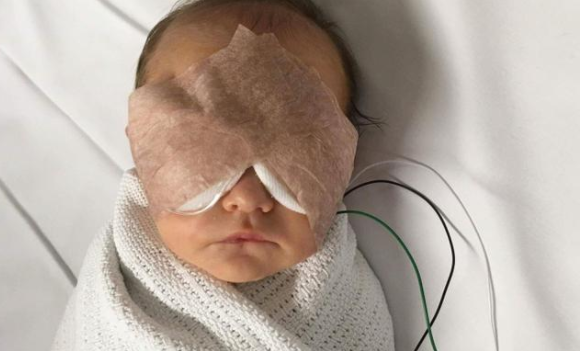Childhood Blindness: Why A Child May Be Born With Glaucoma

Glaucoma is a group of eye conditions that damage the optic nerve, the health of which is vital for good vision. This damage is often caused by an abnormally high pressure in the eye.
Childhood glaucoma — also referred to as congenital glaucoma, paediatric, or infantile glaucoma — occurs in babies and young children.
It is usually diagnosed within the first year of life. This is a rare condition that may be inherited, caused by incorrect development of the eye’s drainage system before birth.
A Consultant Ophthalmologist and glaucoma specialist at the Department of Ophthalmology, Lagos State University Teaching Hospital, Prof. Bola Adekoya, says high maternal age can cause congenital glaucoma in a newborn.
She said though studies have not attributed high maternal age to be 100 percent responsible for congenital glaucoma, it has been highlighted to be a possible risk factor.
A study published in the United States by the National Centre for Biotechnology Information and titled, Association between maternal age and birth defects of unknown etiology: United States, 1997-2007, states that birth defects affect three percent of babies born, and are one of the leading causes of infant mortality.
“Both younger and older maternal age may pose increased risks for certain birth defects,” study lead, Simerpal K Gill, says of the research, which assessed the relationship between maternal age at the estimated delivery date and the risk for birth defects.
The authors also note that low birth weight, non-Hispanic black maternal race/ethnicity , maternal history of seizure, maternal antihypertensive drugs use, and maternal sexually transmitted infection are some of the causes of congenital glaucoma.
Also, American Academy of Ophthalmology states that 90 percent of congenital glaucoma cases occur sporadically, and that only 10 percent of cases have an increased frequency in the family.
According to online portal WebMD, congenital glaucoma is a type of glaucoma, a group of diseases in which high fluid pressure in your eye damages the optic nerve. It affects children between birth and three years.
“‘Congenital’ means it’s present at birth, WebMD states.
Speaking with PUNCH Healthwise, Adekoya said congenital glaucoma is a potentially blinding ocular disease of childhood in which high fluid pressure in the eye damages the optic nerve.
She noted that it affects children between birth and three years, and that it is hard to predict which baby will be born with the condition.
The glaucoma specialist said parents with a family history of the disease are also more likely to pass it on to their children.
“Most times, when something is wrong at birth, it is genetic. However, we sometimes don’t know what these genetic problems are to be able to identify and have them addressed.
“It can also be possible that there is no family history; it could just occur spontaneously,”
Adekoya said.
The World Health Organisation described glaucoma as the second leading cause of visual loss and blindness in the world, followed by cataract.
The WHO estimates that 105 million people are glaucoma suspects, and about 13.5 million people over age 40 have Primary Open Angle Glaucoma, which constitutes 60 per cent of the total burden of the disease.
“Globally, six million people (26.6 percent) have Primary Angle Closure Glaucoma; 300,000 children (1.3 percent of global child population) have congenital glaucoma; and 2.7 million individuals (12.1 percent of global population) are affected with secondary glaucoma.
“Globally, approximately 70 percent of Primary Open Angle Glaucoma cases belong in developing countries,”
the WHO stated.
The consultant ophthalmologist said in order to avoid such birth defects, young women in advanced countries, who are not ready to have children, usually opt to have their eggs frozen.
“They usually have their eggs harvested and frozen in their early 20s or 30s. By the time they are ready for childbearing, the eggs are still in their best state,”
she added.


